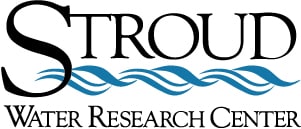
WikiWatershed is a web toolkit designed to help citizens, conservation practitioners, municipal decision-makers, researchers, educators, and students advance knowledge and stewardship of fresh water. WikiWatershed an initiative of Stroud Water Research Center, a global leader in freshwater science.
Search the Knowledge Base
Help Topics
Model My Watershed FAQ
17 ArticlesA quick guide to basic usage of Model My Watershed. For in-depth information about the Model My Watershed Site Storm Model and Watershed Multi-Year Model, please consult the technical documentation.
- 1. How Do I Connect/ Log In/ Create a Model My Watershed Account?
- 2. Password Reset/Username Recovery
- 3. Browser and Device Compatibility
- 4. How Do I Find My Location in Model My Watershed?
- 5. Can I Use Model My Watershed Internationally?
- 6. How Do I Free-Draw a Polygon/Area Around My Watershed?
- 7. How Do I Save and Share a Project?
- 8. How Do I Import GIS-Drawn Shape Files for My Watershed Boundary?
- 9. Can I Add Citizen Science Water Quality Data to Model My Watershed?
- 10. Can I Change Between Units of Measurement?
Model My Watershed Technical Documentation
10 ArticlesThis reference document is intended to provide technical documentation and references for the data layers, data analysis algorithms, models, computational framework, and other components that together create the hydrologic and water quality output delivered by the Model My Watershed web application.
- 1. Introduction
- 2. My Account Page
- 3. Layers (Viewable Mapped Data)
- 4. Select Area of Interest (AoI)
- 5. Analyze Area of Interest (AoI)
- 6. Monitor: Multi-Catalog Free-Text Search for Datasets
- 7. Model Water Quantity and Quality
- 8. Saving and Sharing Your Project
- 9. Framework for Web App
- 10. References and Credits
Model My Watershed Site Storm Model Guide
11 ArticlesThe Model My Watershed Site Storm Model simulates storm runoff and water quality by applying the TR-55 and STEP-L water-quality models for a single 24-hour rainstorm over a selected land area within the continental United States.
- 1. Introduction
- 2. Sign In and Share Location
- 3. Navigate the Map
- 4. Find Your Watershed
- 5. Choose Basemaps and Overlays
- 6. Select an Area to Model
- 7. Analyze an Area
- 8. Monitor an Area
- 9. Model an Area
- 10. Save and Share a Project
MapShed Watershed-Modeling Tool Guide
7 ArticlesLearn about this GIS-based watershed modeling tool that uses hydrology, land cover, soils, topography, weather, pollutant discharges, and other critical environmental data to model sediment and nutrient transport within a watershed.
- 1. Introduction
- 2. How MapShed Works
- 3. MapShed Walkthrough
- 4. Software Downloads
- 5. Data Downloads
- 6. Additional Documentation
- 7. Video Tutorials
Runoff Simulation Guide
7 ArticlesThe Runoff Simulation shows how land use and soil together determine whether rainfall infiltrates into the soil, runs off into streams or is evaporated and transpired by plants.
- 1. Introduction
- 2. Adjusting Rainfall Amount
- 3. Selecting Land Cover Type
- 4. Selecting Soil Group
- 5. Reading the Results
- 6. Notes About Using the Model
- 7. Credits
This reference explains how to use Monitor My Watershed to explore EnviroDIY sensor data. EnviroDIY is a community for do-it-yourself environmental science and monitoring.
- 1. Introduction
- 2. Key Terms
- 3. Create and Edit an Account
- 4. Register, Edit, Delete, and Follow Sites
- 5. Browse Sites
- 6. Times Series Visualization
- 7. Sending/Uploading Sensor Data
- 8. Additional Help
- 9. Credits
Monitor My Watershed Leaf Pack Data Manual
8 ArticlesMonitor My Watershed lets you share and explore macroinvertebrate data from the Leaf Pack Network. Monitor My Watershed is part of the WikiWatershed toolkit.
- 1. Introduction
- 2. Create an Account
- 3. Edit Your Account
- 4. Add, Edit, or Delete a Site
- 5. View and Follow Sites
- 6. Enter, Edit, and Delete Leaf Pack Data
- 7. View and Download Leaf Pack Data
- 8. Credits
Monitor My Watershed Rock Pack Data Manual
8 ArticlesMonitor My Watershed lets you share and explore rock pack data from the Leaf Pack Network. Monitor My Watershed is part of the WikiWatershed toolkit.
- 1. Introduction
- 2. Create an Account
- 3. Edit Your Account
- 4. Add, Edit, or Delete a Site
- 5. View and Follow Sites
- 6. Enter, Edit, and Delete Rock Pack Data
- 7. View and Download Rock Pack Data
- 8. Credits